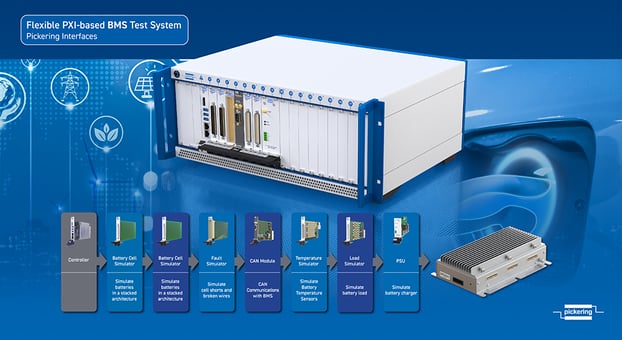On-Demand Webinar:
The Role Of Testing In Ensuring The Functionality,
Quality And Reliability Of Battery Management Systems
The Role Of Testing In Ensuring The Functionality, Quality And Reliability Of Battery Management Systems
On-Demand Webinar
Join Pickering Interfaces' Paul Bovingdon, Technical Engineering Manager and Noman Hussain, VP - Software & Strategic Business Development to learn how industry-standard, modular PXI-based switch and simulation products can be used in BMS functional testing to simulate correct battery voltage, current and temperature readings, as well as HIL and fault insertion testing to verify correct BMS operation under a range of real-world conditions and fix potential issues before the systems are deployed in the field.

Design Validation: Used to evaluate the performance, safety, and reliability of the BMS design and its controlling firmware.
- Thermal and Environmental Testing: verifies that the BMS can operate within the specified temperature and humidity ranges
- Electromagnetic Compatibility Testing: verifies that the BMS does not generate electromagnetic interference that could affect other electronic systems and is not subject to electromagnetic interference from other sources
- Hardware-in-the-loop (HIL) Simulation Testing: the BMS is tested for reactions to faulty signals
Manufacturing testing: Ensures that each BMS unit is built to the correct specifications and is free from defects.
- Functional Testing: verifies that the BMS operates as intended
- Quality Control Testing: verifies that the BMS meets the specified quality standards
